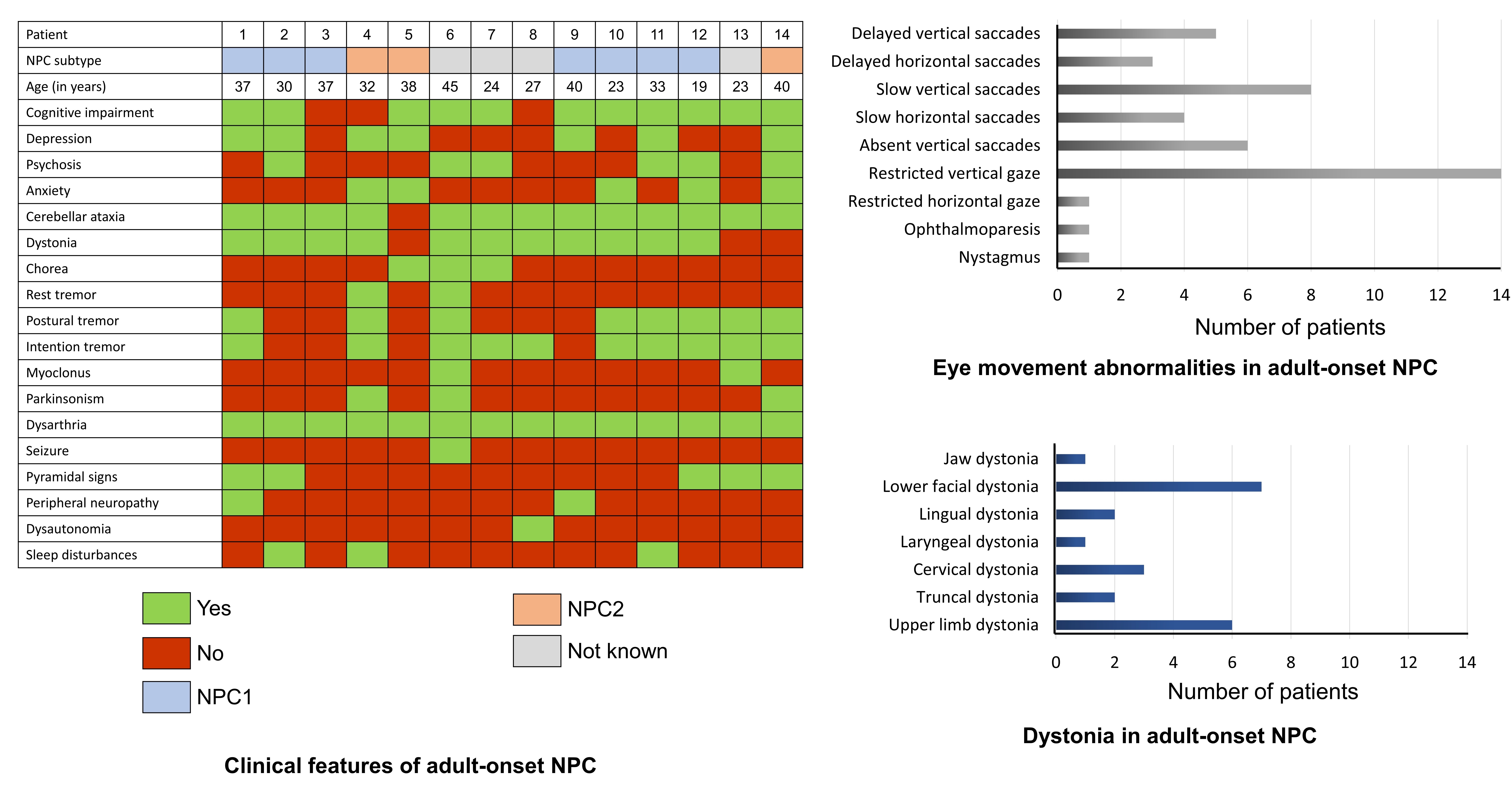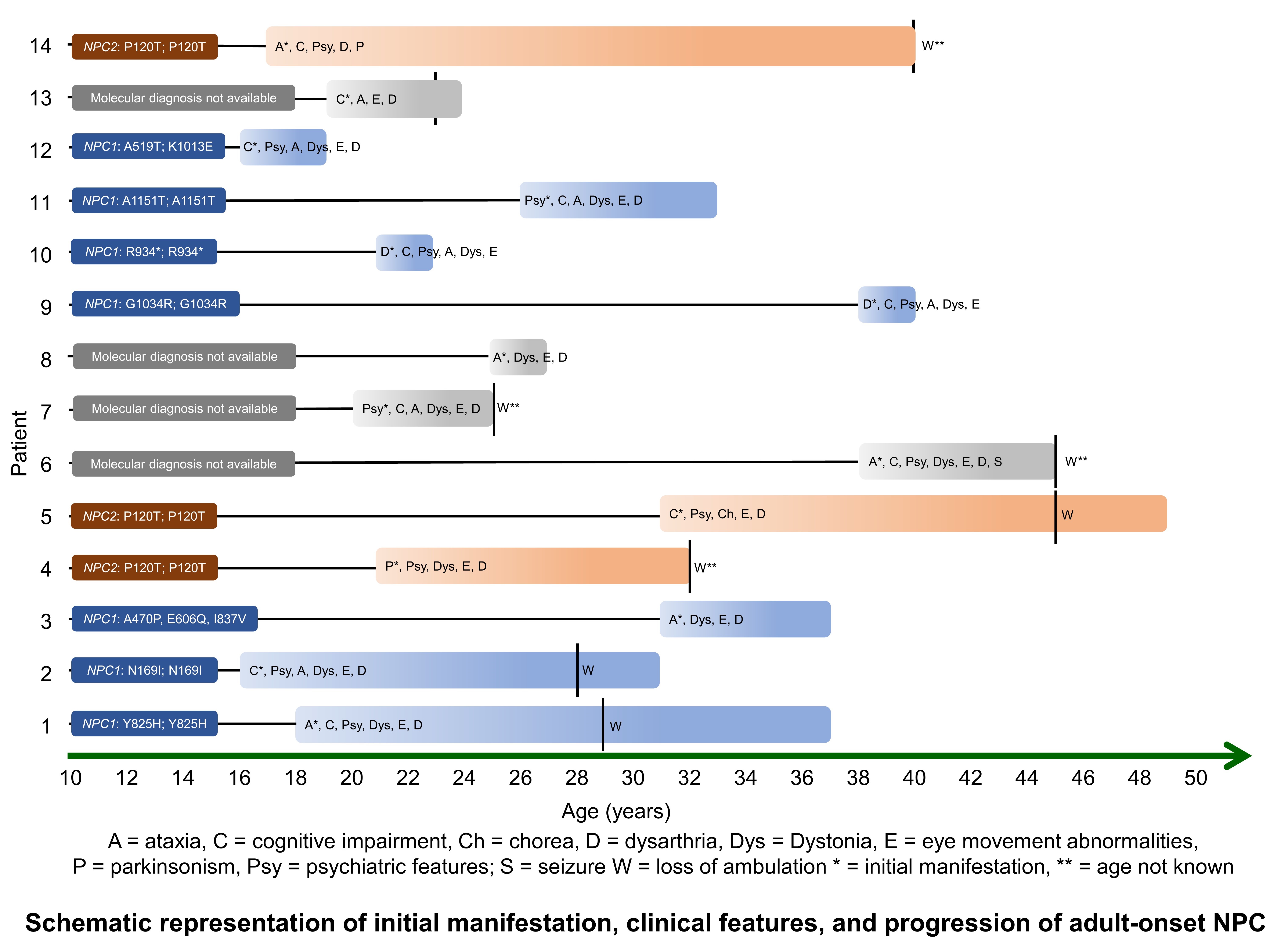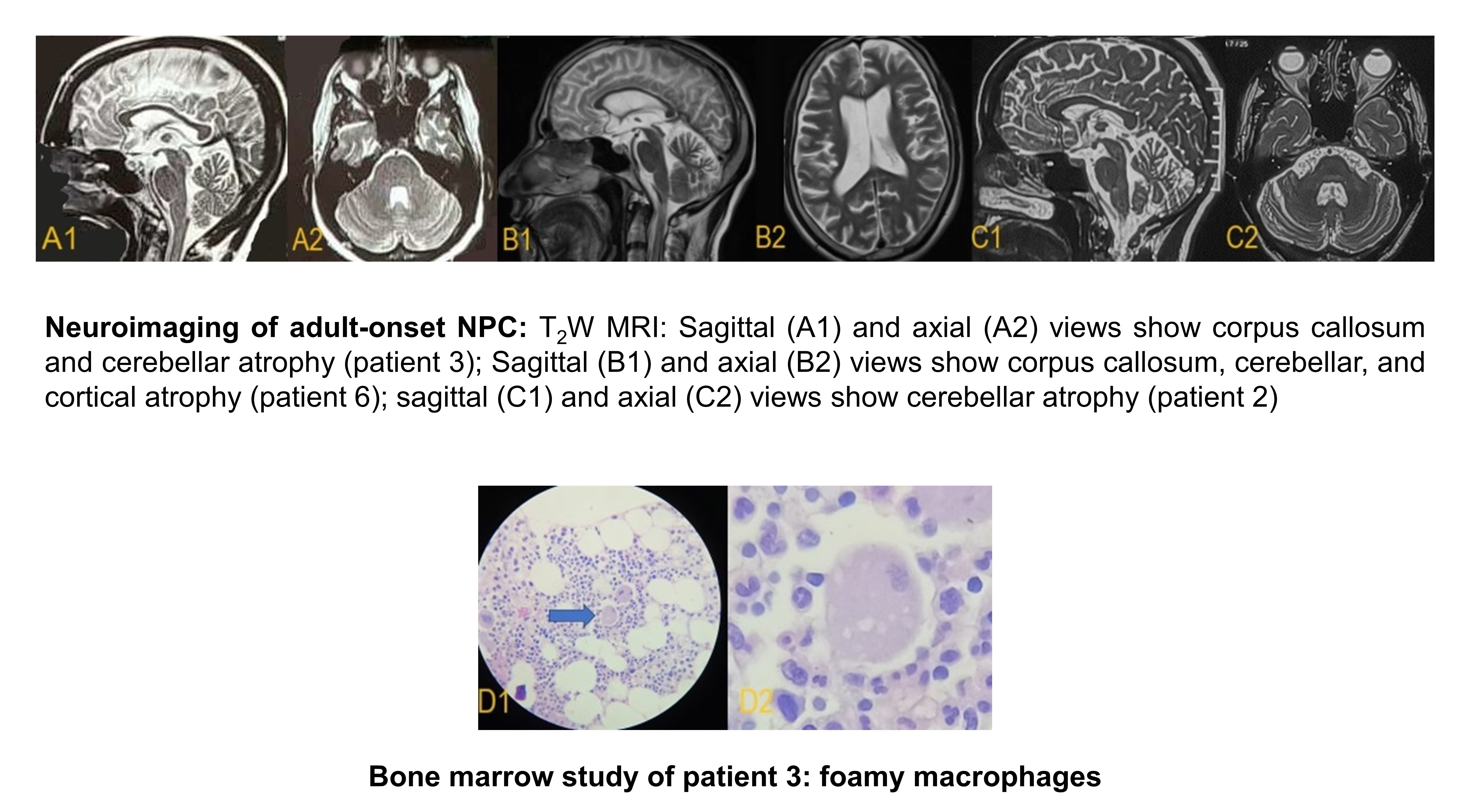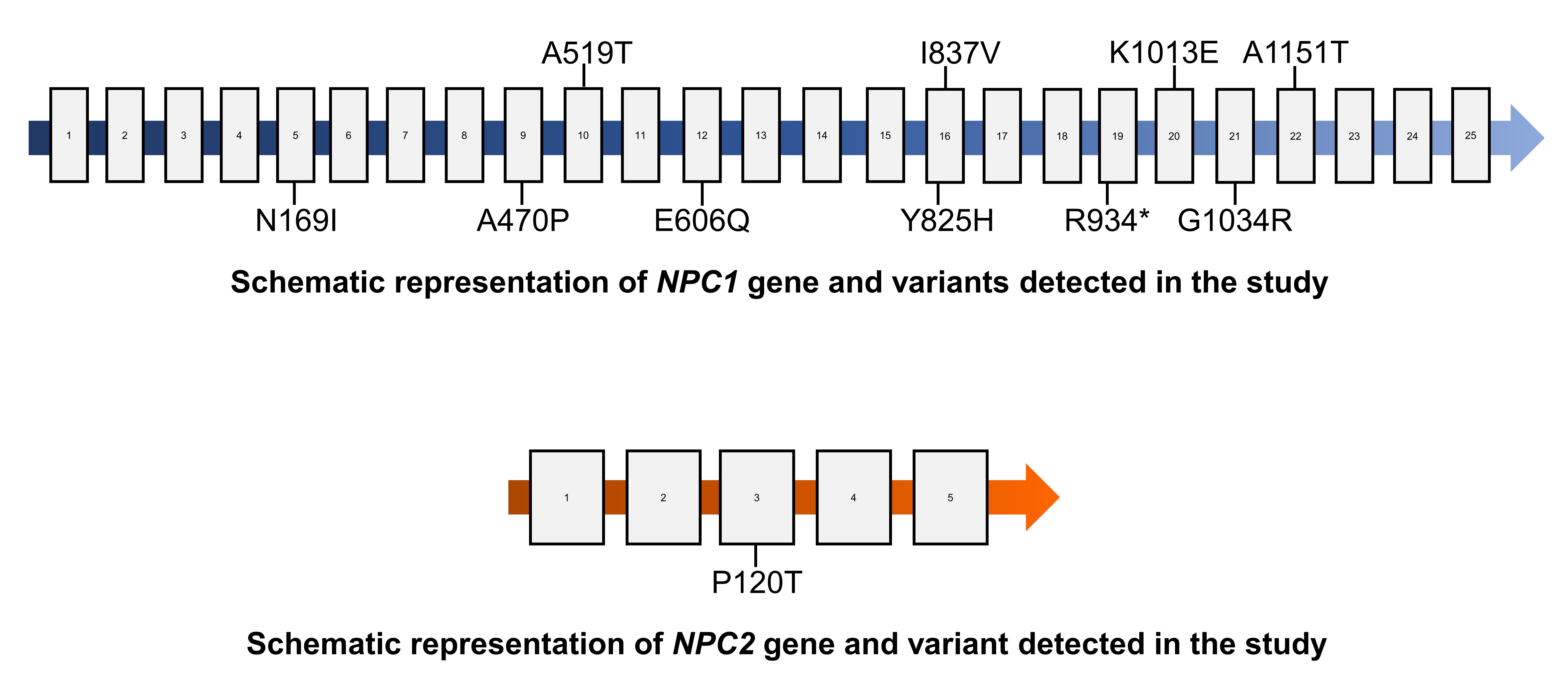Category: Rare Genetic and Metabolic Diseases
Objective: This study was aimed to describe the clinical, radiological, and molecular profile of adults affected by NPC.
Background: Adult-onset Niemann-Pick C (NPC) is a progressive and disabling lysosomal storage disorder. It can elude early recognition because of lack of systemic features and non-specific neuropsychiatric features.
Method: This is an observational study of patients affected by NPC from six centers across India; these centers maintained detailed records of the patients. Missing information was collected from relatives through telephone calls. Our inclusion criteria were (1) patients aged 16 years or more, (2) patients with NPC suspicion index tool total risk prediction score 70 or more, and (3) presence of foamy macrophages or sea-blue histiocytes in bone marrow study or biallelic mutations in the NPC1 or NPC2 genes.
Results: A total of 14 patients (female: male = 8: 6), at age 25.0 ± 7.4 years, manifested ataxia (5), psychosis (2), cognitive decline (4), dysarthria (2), or parkinsonism (1) initially. By age 33.0 ± 6.9 years (age at examination), they developed additional neurological features, they had restricted vertical gaze (14), absent vertical saccades (6), slow or delayed vertical saccades (8), slow or delayed horizontal saccades (4), dysarthria (14), cerebellar ataxia (13), and dystonia involving the lower face (7), jaw (1), larynx (1), tongue (2), neck (3), upper limbs (6), and trunk (2). Four patients had palpable splenomegaly. MRI showed cerebellar (10), cortical (8), and corpus callosum (4) atrophy. By age 32.6 ± 7.8 years, eight patients lost independent ambulation. Seven patients had mutations in the NPC1 gene: homozygous (N169I, Y825H, G1034R, A1151T, R934*) or compound heterozygous (A470P, A519T, E606Q, I837V, K1013E) variants. Three unrelated patients had homozygous variant (P120T) in the NPC2 gene. Molecular data was not available for four patients.
Conclusion: Adult-onset NPC, given the heterogeneous clinical manifestations at onset, often remains unrecognized till they develop the classical neurological features such as supranuclear vertical gaze palsy, cerebellar ataxia, and dysarthria. Many patients manifest cognitive decline, psychiatric abnormalities, and dystonia involving lower face (typically), upper limbs. Bone marrow study may help in diagnosis when molecular analysis is ambiguous or not available.
The data of first 11 patients was presented in the MDSICON on 24th February, 2024.
Clinical features of adult-onset NPC
Progression of adult-onset NPC
Neuroimaging and histopathology of adult-onset NPC
Genotype of adult-onset NPC
References: 1. Wijburg FA, Sedel F, Pineda M, et al. Development of a suspicion index to aid diagnosis of Niemann-Pick disease type C. Neurology. 2012 May 15; 78 (20): 1560-7.
2. Devaraj R, Mahale RR, Sindhu DM, et al. Spectrum of Movement Disorders in Niemann-Pick Disease Type C. Tremor Other Hyperkinet Mov (N Y). 2022 Sep 8; 12: 28.
To cite this abstract in AMA style:
S. Bhowmick, J. Ganguly, D. Garg, V. Holla, P. Wadia, H. Shah, P. Shah. Adult-onset Niemann-Pick C in India: phenotype and genotype [abstract]. Mov Disord. 2024; 39 (suppl 1). https://www.mdsabstracts.org/abstract/adult-onset-niemann-pick-c-in-india-phenotype-and-genotype/. Accessed December 14, 2025.« Back to 2024 International Congress
MDS Abstracts - https://www.mdsabstracts.org/abstract/adult-onset-niemann-pick-c-in-india-phenotype-and-genotype/




